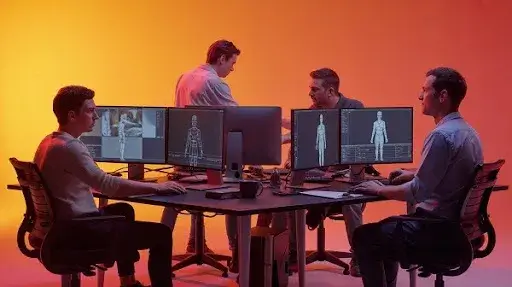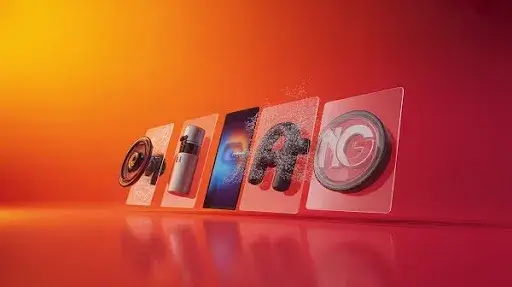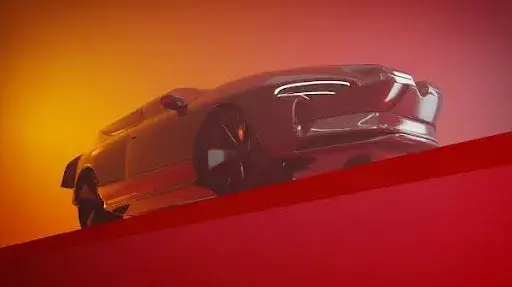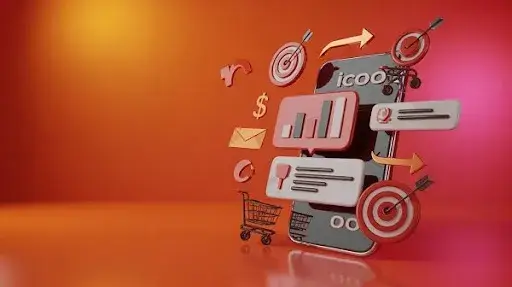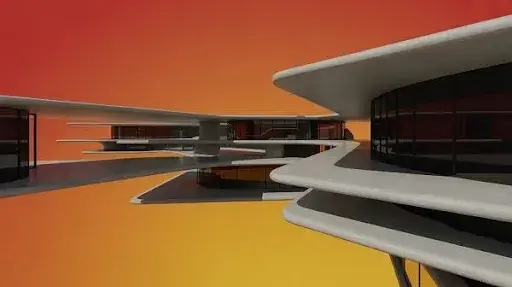You’ve probably watched a movie or game trailer and thought, “How can this look so real?” That’s CGI animation doing its job, short for computer-generated imagery animation. It’s what brings dinosaurs back to life, lets superheroes defy physics, and builds entire digital cities that feel almost touchable.
Calling it “digital art” doesn’t do it justice. CGI animation is a mix of art, math, and emotion. Artists use software to make things that look filmed on camera, even though every pixel is created on a screen. It’s part storytelling, part science, and all creativity.
Have you ever thought about the meaning behind CGI animation or how CGI transforms into stunning visuals? This guide will cover the basic principles of CGI, how it is produced, its different applications, and why it is indispensable in modern-day visuals.
What Is CGI Animation, Exactly?
In the simplest form, the CGI animation definition is the art of generating motion and imagery with computers. It could be a 2D bouncing ball or a photorealistic 3D dragon flying through smoke, both count as CGI.
The concept of computer-generated animation dates back more than a few decades, to the days when animation consisted only of wireframes and rudimentary shapes. Gradually, the fusion of artistry and the science of computer coding evolved, making computer-generated graphics and animation the primary means of storytelling in cinema, video games and advertising.
You’ve probably heard of the revolutionary changes in the animation world, and this applies to computer-generated animation as well.
For instance, Proflic Studio, and many others of its size, have new, commercially available computer-generated animation software and new computer hardware, which have greatly reduced animation costs in the last decades, and now produce what was once over a million dollars’ worth of animation for a mere couple of thousand.
The Two Core Styles: 2D and 3D CGI Animation
CGI can live in two forms: 2D or 3D. Each has its purpose, look, and feel.
2D CGI Animation
This one keeps everything on a flat plane. You’ll see it in explainer videos, brand ads, or cartoons. Thanks to software like Adobe Animate and Toon Boom, 2D CGI animation is far smoother and cleaner than the old hand-drawn stuff.
CGI animation is a perfect means of storytelling where the narrative operates more on a conceptual level and the real is of less importance. For this reason, brands and advertisers prefer 2D CGI animation for their marketing stories. It is fast, inexpensive to produce and still compelling.
3D CGI Animation
This is the area where CGI truly showcases its capabilities. 3D computer animations employ the three dimensions of height, width and depth to create real space around the characters and objects. Animators then simulate life with motion, light and texture.
You’ve seen 3D CGI animation everywhere, in Avatar, Toy Story, and even the latest Call of Duty or Fortnite.
For Prolific Studio, 3D animation space is crucial for product visualization, storytelling for immersive experiences, and for ads.
To create the illusion of life and fluidity of movement within a sequence, animators use advanced CGI techniques of rigging and skinning, which involve creating a virtual scaffold, or skeleton, for the animated figure, allowing all the figure’s pivot jumps and stretches to appear natural and causal.
Why CGI Animation Dominates the Entertainment Industry
The secret is simple, there are no limits.
CGI animation in the entertainment industry lets creators do things real cameras can’t. Buildings crumble, galaxies spin, monsters roar, all without breaking a sweat. It’s freedom for storytellers.
It’s also practical. Instead of rebuilding a set, studios can take a digitally adjusted scene and change the lighting, special effects and colors. This is a time-saving, resource-efficient, cost-effective, and often a way of surpassing the expectations on the output.
Some of the most iconic CGI animation examples in cinema and gaming prove its reach:
- Jurassic Park, when dinosaurs first felt terrifyingly real.
- The Matrix, that bullet-time effect still stands unmatched.
- The Lion King (2019), every frame digitally made to look live-action.
- The Witcher 3 and Assassin’s Creed, using CGI to build entire open worlds.
That’s CGI animation in film & games doing what it does best, turning imagination into something you can actually see.
The CGI Animation Workflow: How It All Comes Together
CGI appears seamless when viewed, but a complex, meticulous series of steps, or an animation pipeline, is undertaken to bring the vision to life. Every single frame goes through a series of stages until the final shot is rendered, created by multiple divisions of artists and technicians.
Here’s a closer look at what goes into the CGI animation workflow:
1. Pre-Production
Every story starts on paper. Writers and designers map out ideas, scripts, and storyboards. The direction, tone, and style all take shape here. This is where artists decide how the final animation should feel before moving to the technical side.
2. Modeling
The next step for animation is 3D modeling. Using programs such as Maya, Blender, and 3Ds Max, artists digitally recreate each object and character in a scene. 3D models consist of thousands of individual polygons, each representing a portion of the entire object or character.
3. Texturing and Shading
Now the models need surfaces that look believable, metal, glass, skin, wood, you name it. Artists apply colors, materials, and fine details so each object interacts naturally with light. This step sets the tone and texture of the final look.
4. Rigging and Skinning
At this stage, characters start to move. In computer-generated imagery (CGI), a digital skeleton is placed within the model through rigging and skinning. It controls every facet of movement, from hand gestures to facial expressions, with full and lifelike control.
5. Animation
Here’s the magic part. Animators breathe life into everything using two main CGI animation techniques: keyframe vs motion capture.
- Keyframe animation technique: At crucial points, the artist determines the primary stances, then the computer calculates the frames in between. This works well for movements that aren’t representational and resemble cartoons.
- Motion capture animation: Actors in sensor suits for the motion capture process perform actions that are then translated to the virtual avatars. This is how the seamless motion in movies and video games is created.
6. Lighting and Rendering
Light defines the emotion of a scene, bright and fun, or dark and moody. Once the lighting is set, the CGI animation rendering process begins. This step transforms everything, textures, motion, shadows, into a fully finished image or video.
The complexity of a scene also determines how much time rendering takes, from a few hours to a few days. It is the moment that all of the hard work is showcased in a polished, cinematic manner.
7. Post-Production
In the end, all those rendered scenes move to post-production. In the final stage of production, all loose sounds, VFX, and compositing edits are brought together. The final touch to the full animation is the integration of the song, along with the rest of the tweaks that give it life.
Each stage in this animation pipeline adds another layer of realism, until every second looks effortless.
CGI Animation in Marketing and Advertising
A single photo used to be enough to sell a product. Not anymore. Today, CGI in marketing & advertising drives the most eye-catching campaigns, the ones you can’t scroll past.
Prolific Studio is an example of a video animation agency, and the animation origin Prolific Studio crafted tailored video materials for product branding, showing how cinema and traditional animation techniques merged. For example, think of a sneaker rotating in mid-air, a phone disassembling and reassembling, or a glowing light, and then imagine all of these are animation tricks.
CGI animation for marketing gives businesses full creative control. In advertising, the goal is to capture attention. And for that, animation is the answer. Research shows that animated footage is far more memorable to audiences than a static image. This is exactly the reason computer animation, especially for 3D visuals, is used in advertising campaigns for brands like Apple and Nike.
The CGI animation uses in marketing stretches beyond ads. It’s now common in websites, e-commerce product displays, and interactive social media content. It’s the visual edge that keeps brands ahead in a world overflowing with content.
The Tools and Tech Behind CGI Animation
If you’ve gained access to the production of a movie or game, you will understand that there is no one single piece of software that works magic with CGI. It is a CGI toolbox with specialized instruments for sculpting, lighting, and motion, among others.
It is customizable for everything from phantasmagoric critters to game levels, car commercials, and everything in between the scope of your imagination.
Here are a few tools that tend to pop up in most CGI setups:
- Autodesk Maya – A favorite in big studios for 3D animation and character rigging.
- Blender – Free, open-source, and surprisingly powerful. Many indie animators swear by it.
- 3ds Max – Popular for architectural and product renders.
- Cinema 4D – Known for its sleek interface and motion graphics magic, ideal for CGI animation in marketing.
- ZBrush – Used for creating insanely detailed 3D models.
- Houdini – The go-to for visual effects like explosions, water, smoke, or cloth.
Each one has a job. You might use Maya to make your hero run while Houdini builds the waves crashing behind him. It’s teamwork, between programs and people.
And here’s the good news: you don’t need a Hollywood budget to get started. With cloud-based tools and shared rendering systems, even smaller studios like Prolific Studio work efficiently without the huge overhead. The same principles that shape blockbuster visuals can be learned on a mid-range laptop today.
Where CGI Animation Shows Up Beyond Movies
Most people still think of CGI as something limited to action films. But it’s everywhere now, from medical explainer videos to corporate storytelling. Here’s a quick tour.
1. Architecture and Real Estate
Developers use CGI to show clients what buildings will look like before a single wall goes up. These animations display lighting, texture, and interiors in full detail. It saves time, money, and miscommunication.
2. Medical and Scientific Visualization
For researchers and hospitals, CGI animations create things that cannot be filmed, like the blood flow in arteries and the movements of a virus on the body. It’s storytelling for science, and it’s made patient education much clearer.
3. Education and Training
Ever watched a 3D model explain how planets move? These animations do shift for educators and trainers to create impactful visual representations of abstract, complex, or difficult-to-understand ideas. Even CGIs for flight simulator environments assist in pilot training.
4. Product Marketing
CGI in marketing is a total game-changer. You can show a product from every angle, in any environment, long before it’s even made. Brands save big on photo shoots, and marketers love the freedom of designing visuals without limits.
5. Gaming and Virtual Reality
Sequential game worlds employ art to disguise the science embedded in motion capture, modeling, and real-time rendering to create vibrant worlds.
6. Corporate Communication
Companies are using CGI animation to replace boring PowerPoint decks with short, visual explainers. It helps teams sell ideas faster, especially when the topic is complex. At Prolific Studio, that’s a big part of what we do, helping brands turn ideas into stories people actually want to watch.
How CGI Looks So Real
What separates good CGI from great CGI? Believability. The goal isn’t perfection, it’s authenticity. Here’s what helps make that happen:
- Lighting Physics: The way light bounces, reflects, and scatters in CGI mimics how real light behaves.
- Motion Accuracy: Motion capture brings natural human movement into digital characters.
- Texture Details: The tiny things, dust, scratches, skin pores, make it all feel grounded.
- Camera Work: Virtual lenses recreate blur, focus, and lens flare just like a real camera.
Perfect CGI does not scream for your attention. It is quiet and true, and the little flaws, a smudge, a flicker, or a lost reflection to create a staged scene, add humanity to a scene.
Common Misconceptions About CGI Animation
“It’s just for movies.”
Not even close. CGI animation for marketing, education, and architecture is growing fast. It’s used in almost every visual field now.
“CGI is easy.”
It’s not. The computer only follows instructions, the creativity comes from people. Every second of animation is designed and fine-tuned by hand.
“CGI always looks fake.”
Only when it’s rushed. The best CGI often goes unnoticed because it blends seamlessly with live action.
“You need massive budgets.”
Not anymore. Affordable software, open-source tools like Blender, and cloud rendering make CGI accessible for small studios and solo artists.
Frequently Asked Questions
What’s the difference between CGI animation and VFX?
CGI animation creates digital objects or scenes from scratch. VFX, on the other hand, mixes those CGI elements with real footage to enhance realism.
Which industries rely on CGI animation the most?
Film and gaming industries are easy examples, but everyday storytelling and visualization involve healthcare, education, architecture, and marketing as well.
How long does CGI animation take?
In terms of time, a short commercial requires weeks of work, while a full-length feature film means years of modeling, rigging, and rendering.
Why is CGI animation so effective in marketing?
Advertisement design allows brands to creatively demonstrate products, including displays of impossible camera angles and visualization of things that don’t exist yet.
Can CGI animation be automated?
Not fully. Even though elements like rendering and motion smoothing assist AI, the rest of the creative work is up to the artists.
Final Words
CGI isn’t just a technical skill; it’s how ideas come to life today. From movies to mobile ads, it connects imagination with something people can see and feel.
As Prolific Studio’s Prolific Studio’s CGI animators, we view our work as more than visuals; we see it as storytelling. Every project begins with a simple notion and culminates in producing something that captures audience attention and refuses to let go.
If you are looking to enhance your brand, film, or product, CGI is probably your best option. In this domain, imagination extends far beyond reality and constructs the future.
Related Articles:

